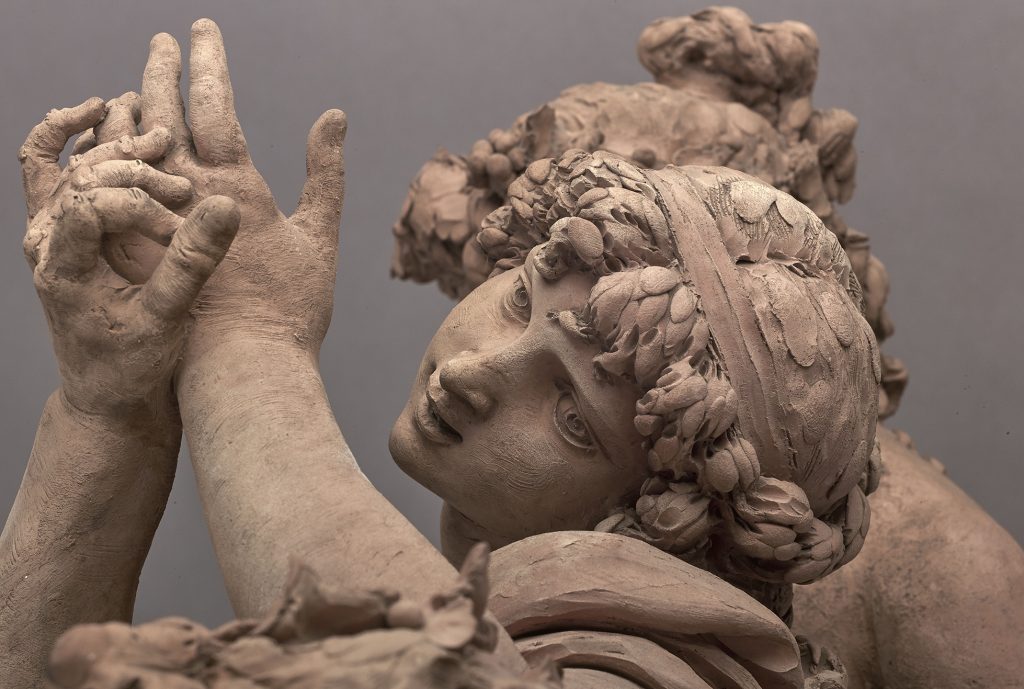September 24 – December 13, 2019
Monday – Friday, 9:00 a.m. – 5:00 p.m.
Wallach Study Center for Art & Architecture, Avery Architectural & Fine Arts Library

Now on view in Avery Library is the new exhibition Clodion (1738-1814) and “Clodion Mania” in Nineteenth-Century France. This exhibition is the third in a series curated by the MA students in the Department of Art History and Archaeology, under the guidance of Frédérique Baumgartner, director of the MA in Art History program, and Roberto C. Ferrari, curator of Art Properties.
In 1976 Columbia received a gift from Mrs. Irma H. Bloomingdale (1888-1989) of two terracotta sculptures: Satyr and Two Nymphs, and Nymph and Two Satyrs. Conceived as a pair, the complex compositions, imposing in size for works created in clay, portray the companions of the Roman god Bacchus in the midst of a spirited dance. The statuettes are signed and dated by the celebrated eighteenth-century French sculptor Claude-Michel Adam, called Clodion, whose art is associated with the rococo and neoclassical styles. But could the Columbia sculptures be forgeries? This exhibition reconsiders the two statuettes in Columbia’s permanent collection through a study of Clodion’s terracotta production. The online exhibition website (https://projects.mcah.columbia.edu/ma/2019) includes numerous images of both sculptures and longer essays on Clodion and his practice by some of the students who curated the show.
Accompanying the Clodion exhibition is a related installation of nineteenth-century art from the permanent collection on the theme of the goddess Diana and the hunt. This installation was coordinated by Roberto C. Ferrari with Mateusz Mayer, PhD student, Department of Art History and Archaeology.